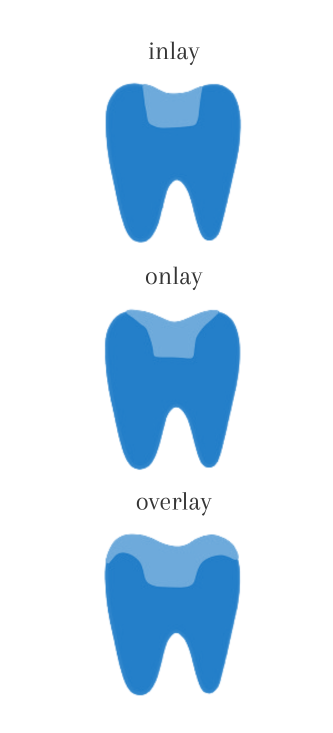Dentistry
What is Dentistry?
Dentistry is one of the most common areas of specialisation in dentistry. This is because it treats our society’s most common oral disease: dental caries (or dental decay). In addition, dentistry is responsible for treating cases of traumatology.
Dentistry procedures are focused on dental restoration. These treatments are necessary when there are caries lesions, fractures or changes in shape and size, defects in enamel development or even occlusal corrections. Therefore, dentistry is responsible for returning the teeth to their original shape and colour.
Pathologies treated by Dentistry
We say that Oral Health exists when teeth are free from pathologies. However, dental caries are the most prevalent oral pathology in our society. But there are more treatments in this field of dentistry.
Dental decay
Dental caries is a disease of bacterial origin, but it can arise due to several factors. In an earlier stage, it is asymptomatic, which makes it more dangerous. Over time, more and more tooth structure is lost, and the symptoms increase.
Apart from aesthetic loss, tooth decay in an advanced stage causes pain, tooth sensitivity and pus formation. The worst-case scenario is tooth loss. This happens as the bacteria convert into acids that are strong enough to demineralise the tooth enamel, making small holes in the tooth surface that grow until the tooth is destroyed.
Dentistry is responsible for treating teeth with primary or secondary caries lesions.
Dental trauma
Traumas are defined by the loss of dental structure due to micro or macro trauma. Microtrauma is associated with excessive occlusal forces, which are very common, for example, in patients with severe dental crowding. Macro-traumas, or external forces, are those caused by accidents, such as road accidents, falls or sporting disasters.
In addition to caries lesions and dental trauma, Dentistry also:
- Corrects diastemas (small spaces between teeth);
- Restores teeth with endodontic treatment;
- Treats teeth that patients do not like shape (small changes in shape);
- Increases the bite for occlusal stabilisation.
The types of Dentistry treatments
Restoring or improving teeth’ functional and aesthetic characteristics involves direct and indirect procedures. The type of restoration to be carried out is directly related to the dental structure remaining as well as the position of the tooth in the arch, which directly impacts the occlusal forces to which it is subjected.
Direct restorations – in composite resins, which mimic the tooth’s colour, with a high mechanical and aesthetic performance – are exclusively carried out in the dental office by the Dentist. In a single session, the problem associated with the tooth is solved.
In more extreme cases, the teeth can be severely destroyed. There is a medical indication for an indirect restoration in these situations, requiring laboratory work and two appointments. Indirect restorations reinforce the entire tooth, avoiding fracturing walls that become fragile due to dental destruction. Indirect restorations can be divided into inlay, onlay, and overlay, depending on the size of the tooth and the affected surface.

Don’t wait; treat yourself
Dental restoration treatments aim to restore the aesthetic and masticatory function of the tooth, restoring its shape. Therefore, there is no better alternative to treatment in the presence of damage due to caries or trauma.
Learn about the advantages of seeking a dentist to restore your teeth:
- Less risk of infection – being an infectious process, when in more advanced dimensions, caries can reach the tooth’s nerve. If it is not treated in time, the tooth may have to be devitalised or extracted;
- Reducing dental sensitivity or pain – the pain caused by caries when reacting to cold or eating sweets disappears quickly with early and proper treatment;
- Improvement in aesthetics and recovery of functionality – by resorting to the use of aesthetic materials, it is possible to reproduce the naturalness and shape of the tooth;
- Reinforcement of the dental structure – a restoration according to ideal standards ensures the longevity of the intervened tooth.
The step by step of dental restoration
Learn the steps that transform diseased teeth into healthier and more aesthetic versions.
1 – Preparing the tooth;
Administering local or locoregional anaesthesia.
Preparing the tooth by isolating it and removing decayed tissue, if any, allowing the creation of the dental cavity shape.
2 – Restoration of the dental structure;
Preparation of the dental substrate and application of the adhesive technique for reconstructing the lost structure with definitive composite resins. This procedure allows the functional and aesthetic anatomy of the tooth to be restored.
The choice of colour is made based on the colour of the tooth to be treated.
3 – Conclusion;
Polishing and adjustment of occlusion.
Notes:
- In indirect restorations, the first appointment consists of preparing the tooth and mold for the laboratory to make the piece.
- In a second appointment, the lab piece is placed using techniques similar to direct restorations. Intraoral radiology procedures can be performed before, during and after the rehabilitation.
- In some cases, depending on the proximity to the pulp structure of the tooth, a pulp protection or repair technique can be performed.

Post-treatment precautions
After dental restoration, you should take some primary care, such as:
- Do not chew food during the anaesthetic effect.
- Do not drink any hot drinks while under anaesthetic.
- Avoid contact with pigmented foods and beverages in the hours immediately following the dental restoration.
Symptoms after treatment
Following the treatment, it is likely that you will experience specific symptoms. Some are temporary, and others may require more attention on your part. We will tell you all about them below.
Just a moment, it will pass
- Some sensitivity to cold in the first stages;
- Sensitive and sore gums;
- The colour of the restorations takes about 1 to 2 weeks to settle when the dental structure completely rehydrates.
Contact your Dentist
- Feeling pain when chewing is normal for the first 2 days. Depending on the anaesthetic technique, the dental ligament may perceive inflammation. However, if it continues after this period, it is imperative that you contact your dentist so that the occlusion can be adjusted.
- When restorations are made in the front teeth, contact your dentist if you notice any irregularity in speech or chewing functions. These teeth are essential functional guides, and there must be correct adaptation and occlusal stability.
Signs of irreversible inflammation – contact your Dentist urgently.
- If you have sensitivity or pain when eating hot substances;
- Pulsing pain, like the “beating of the heart”;
- Acute spontaneous pain, which persists;
- Pain when lying down.

References
- De Kuijper, M.C.F.M., Cune, M.S., Özcan, M., Gresnigt, M.M.M., 2021. Clinical performance of direct composite resin versus indirect restorations on endodontically treated posterior teeth: A systematic review and meta-analysis. The Journal of Prosthetic Dentistry.. doi:10.1016/j.prosdent.2021.11.009
- Kunz, P.V.M., Wambier, L.M., Kaizer, M.D.R., Correr, G.M., Reis, A., Gonzaga, C.C., 2022. Is the clinical performance of composite resin restorations in posterior teeth similar if restored with incremental or bulk-filling techniques? A systematic review and meta-analysis. Clinical Oral Investigations 26, 2281–2297.. doi:10.1007/s00784-021-04337-1
- López, R., Smith, P.C., Göstemeyer, G., Schwendicke, F., 2017. Ageing, dental caries and periodontal diseases. Journal of Clinical Periodontology 44, S145–S152.. doi:10.1111/jcpe.12683
- Kumar, S., Tadakamadla, J., Johnson, N.W., 2016. Effect of Toothbrushing Frequency on Incidence and Increment of Dental Caries. Journal of Dental Research 95, 1230–1236.. doi:10.1177/0022034516655315
- Moraschini, V., Fai, C. K., Alto, R. M., & dos Santos, G. O. (2015). Amalgam and resin composite longevity of posterior restorations: A systematic review and meta-analysis. Journal of Dentistry, 43(9), 1043–1050. doi:10.1016/j.jdent.2015.06.005
- https://www.ncbi.nlm.nih.gov/pmc/articles/PMC5852929/
- Demarco, F. F., Collares, K., Coelho-de-Souza, F. H., Correa, M. B., Cenci, M. S., Moraes, R. R., & Opdam, N. J. M. (2015). Anterior composite restorations: A systematic review on long-term survival and reasons for failure. Dental Materials, 31(10), 1214–1224. doi:10.1016/j.dental.2015.07.005
